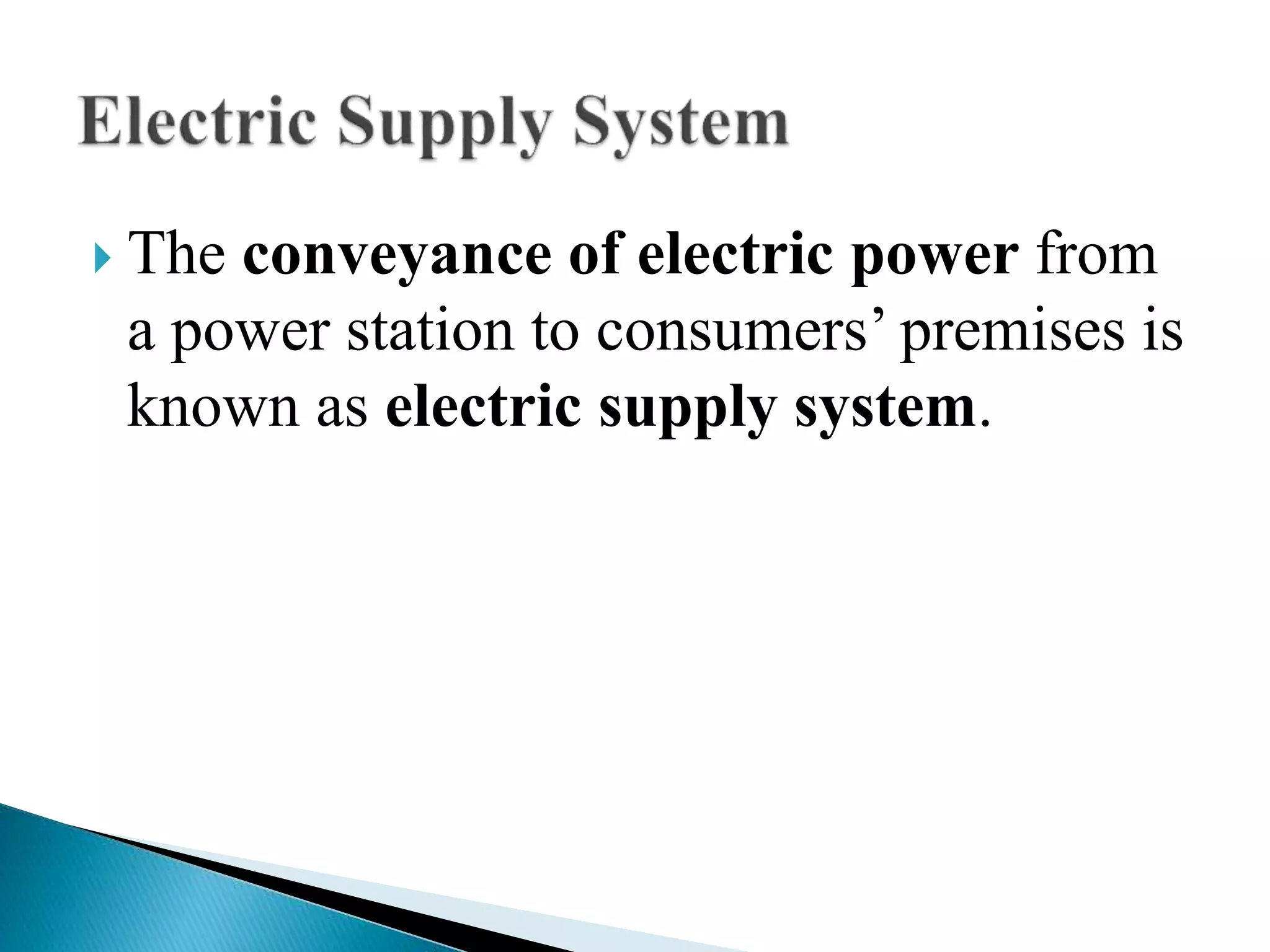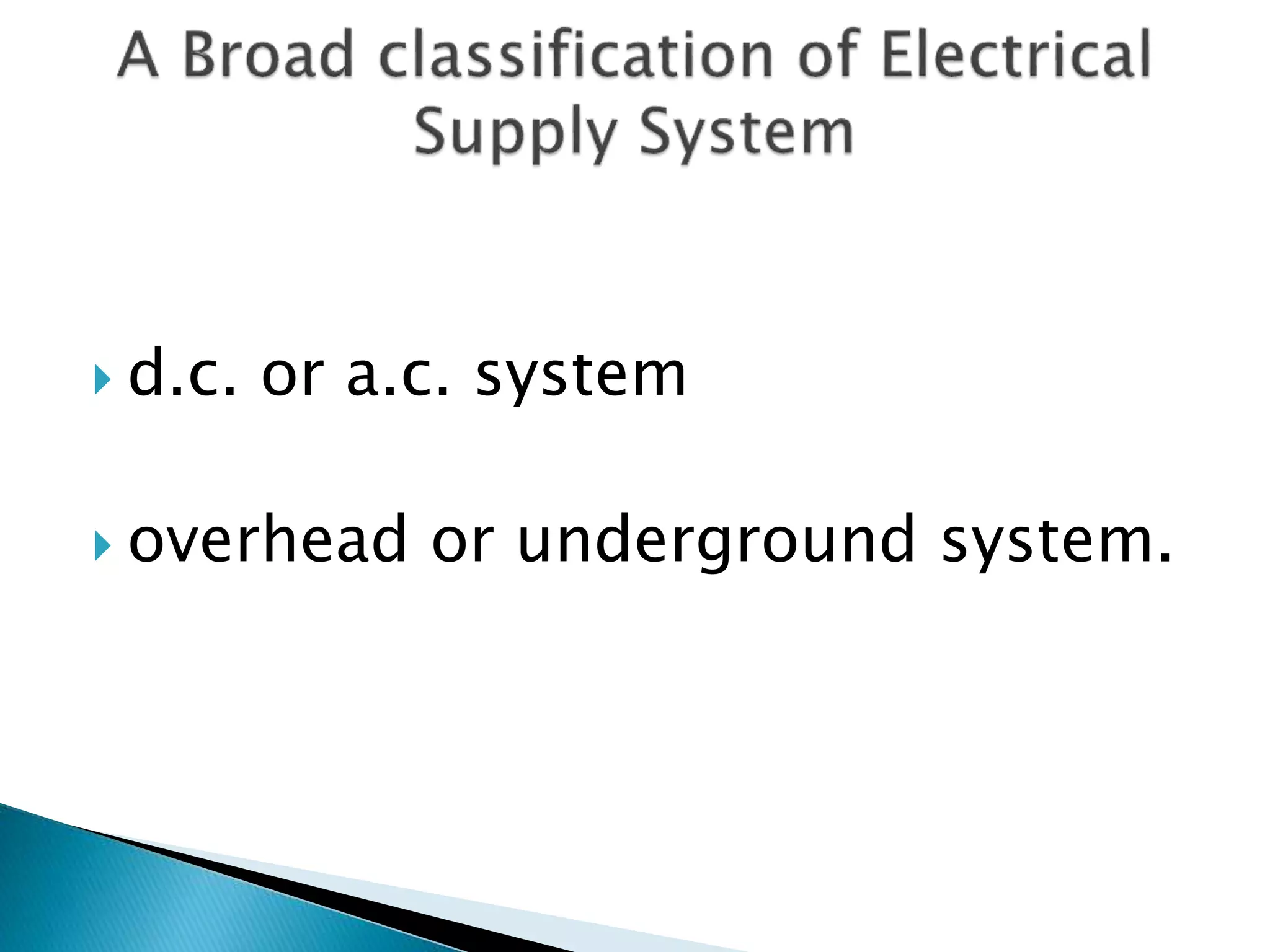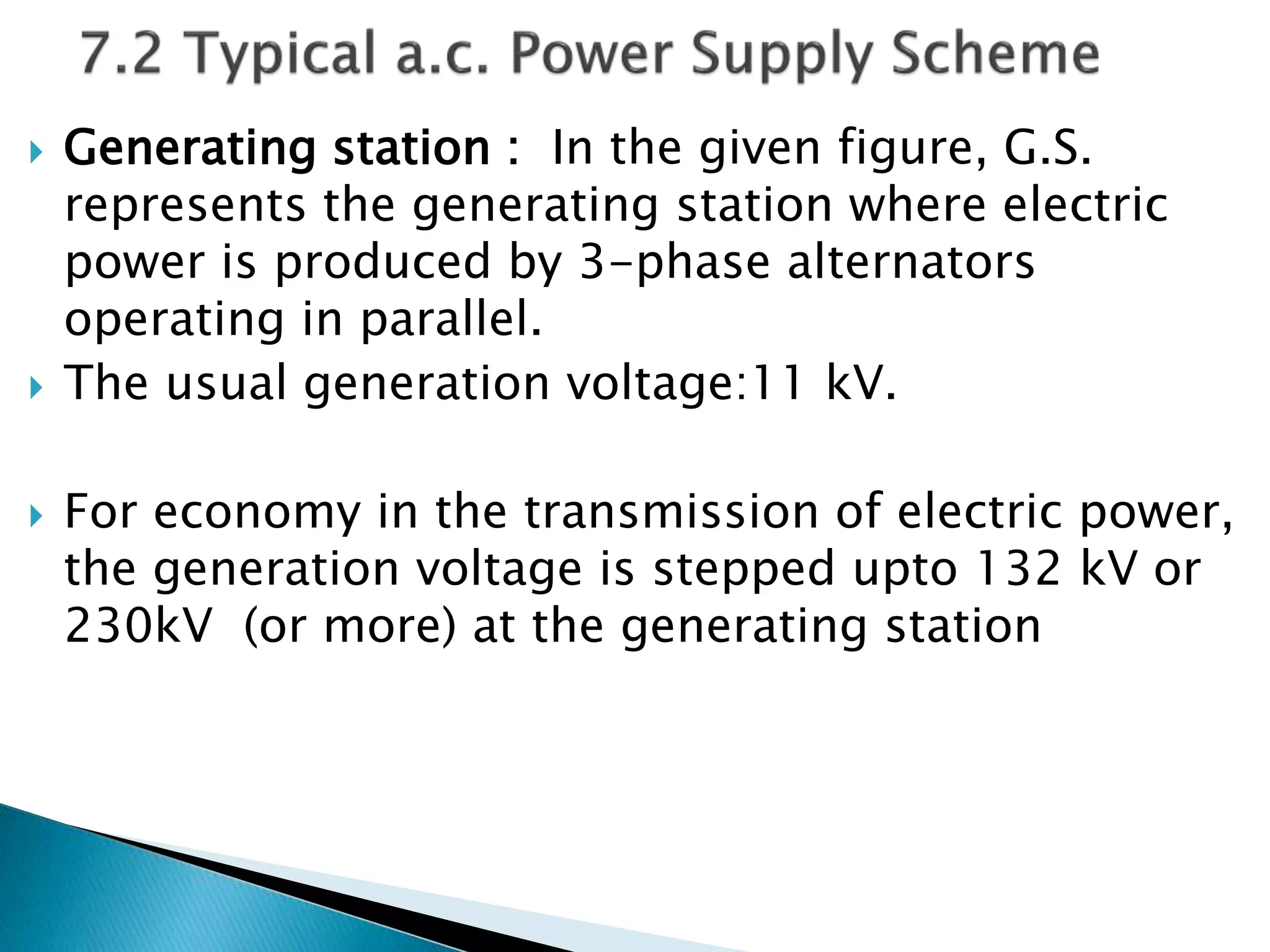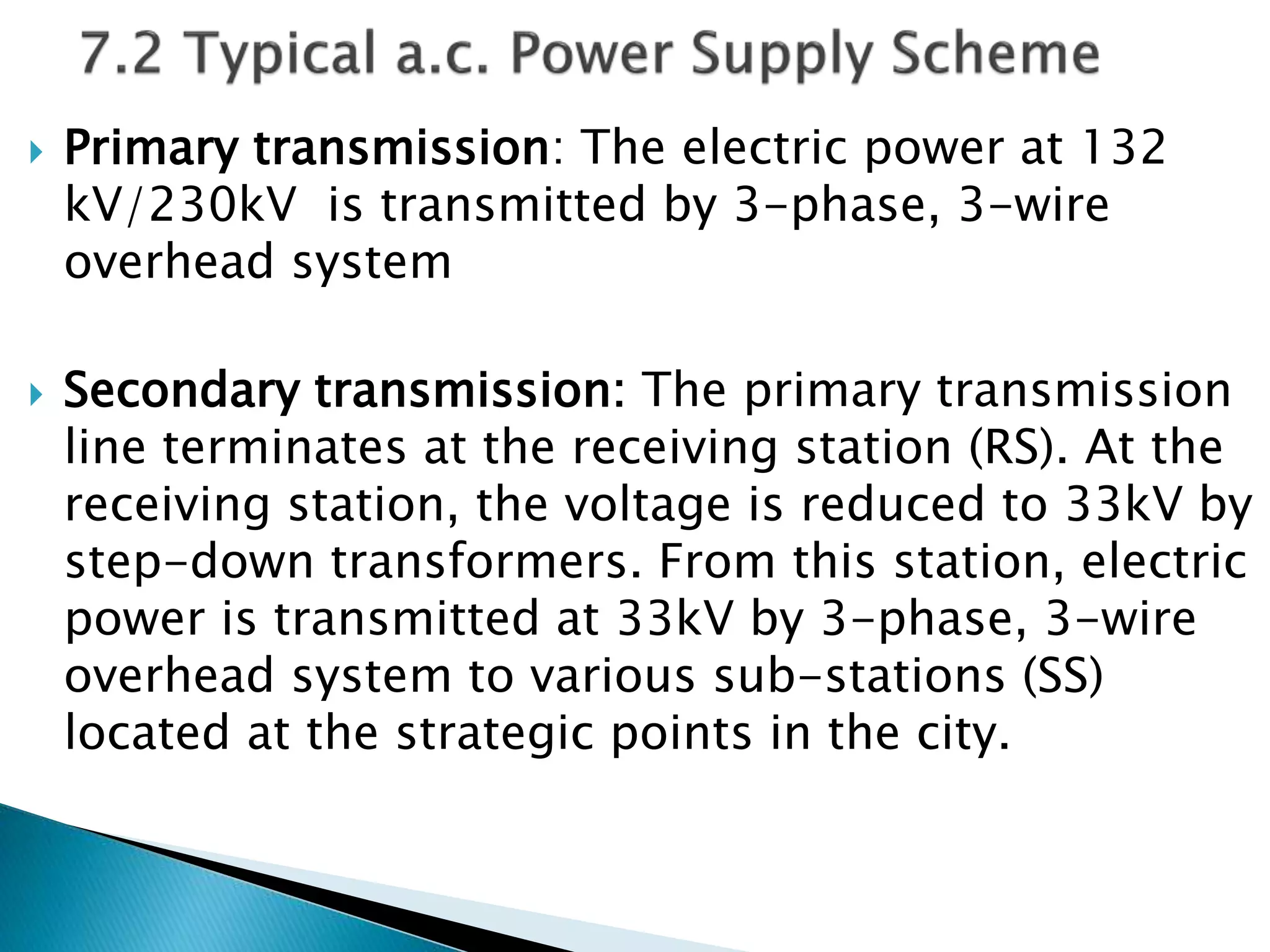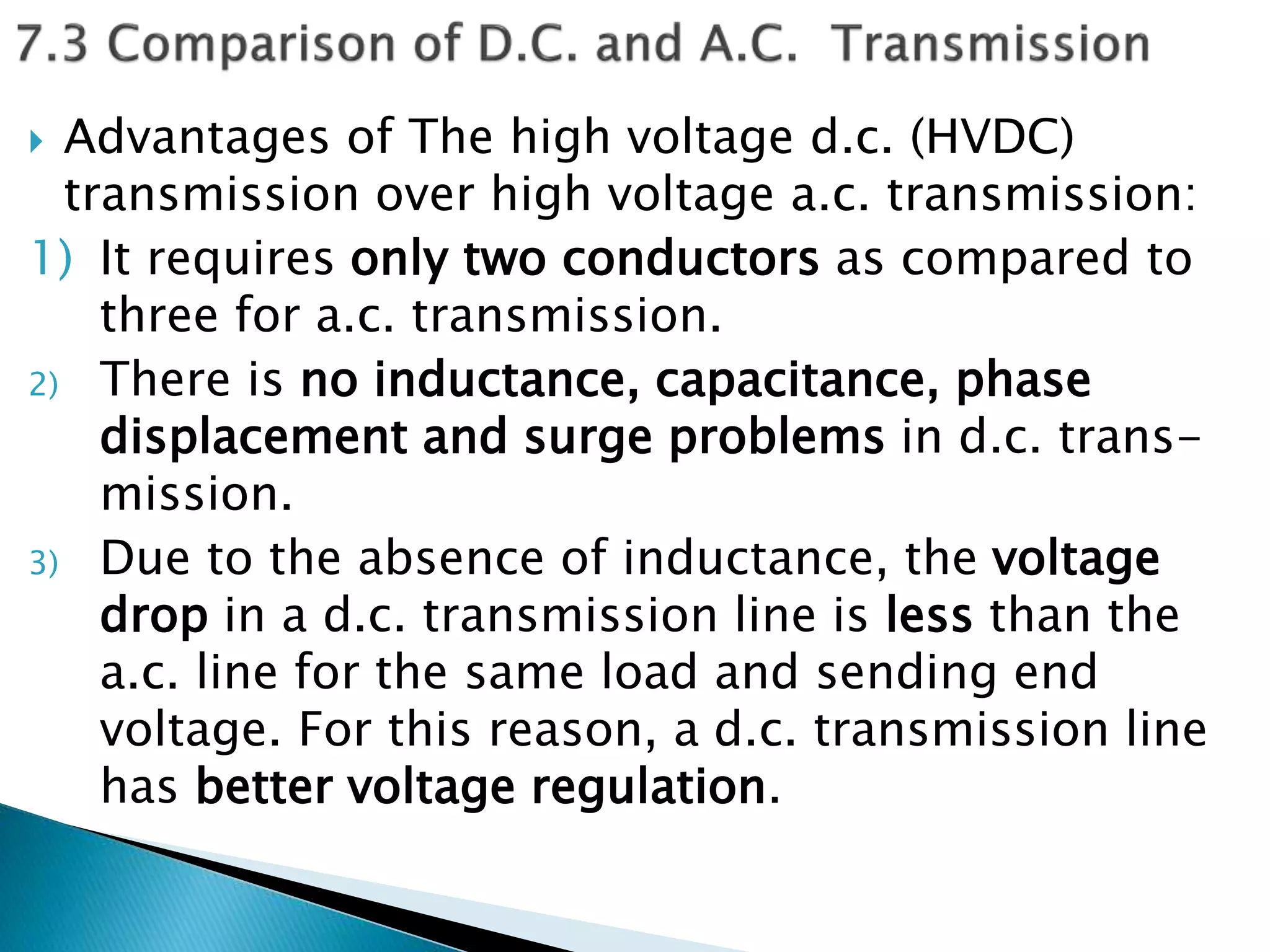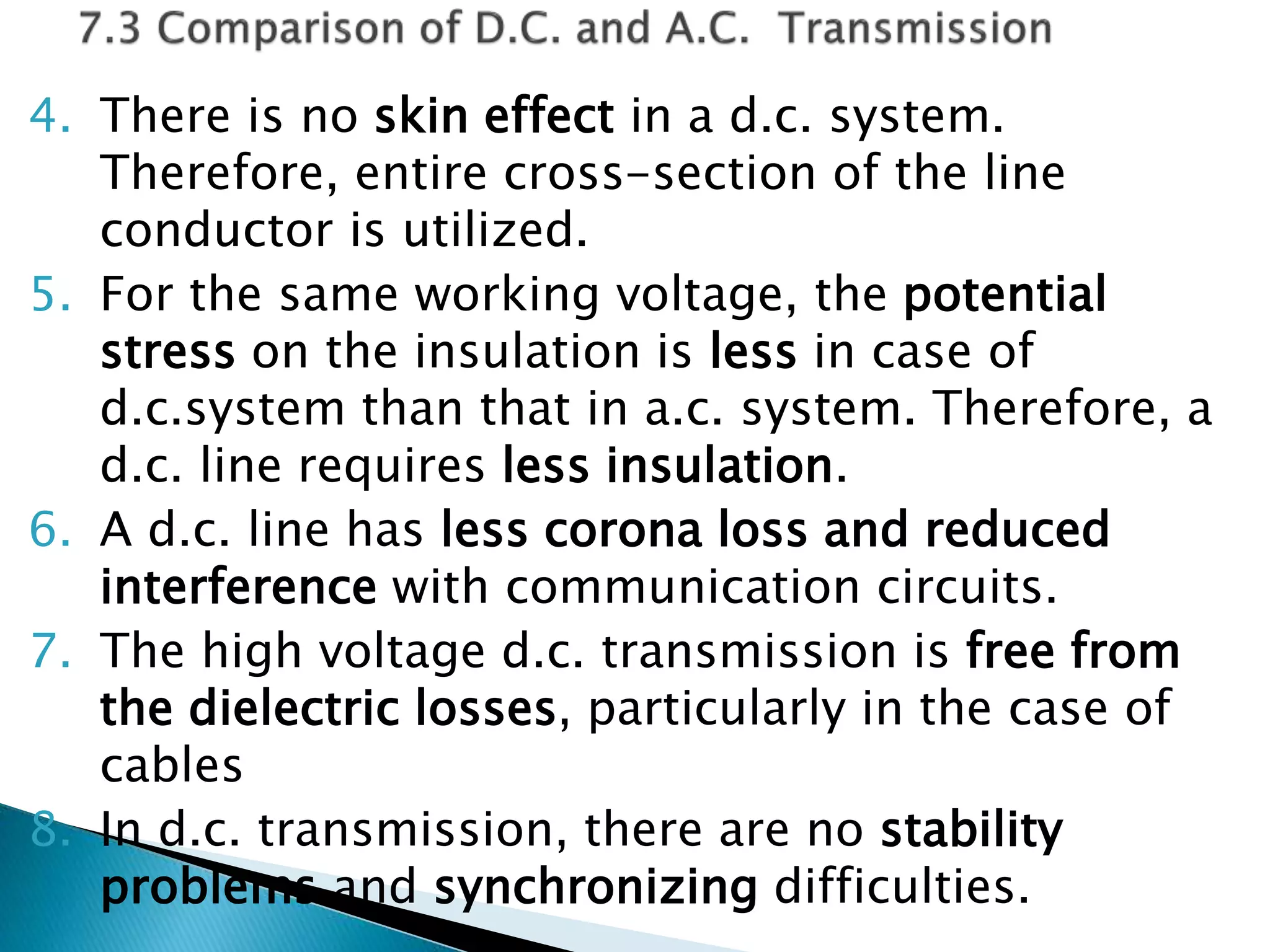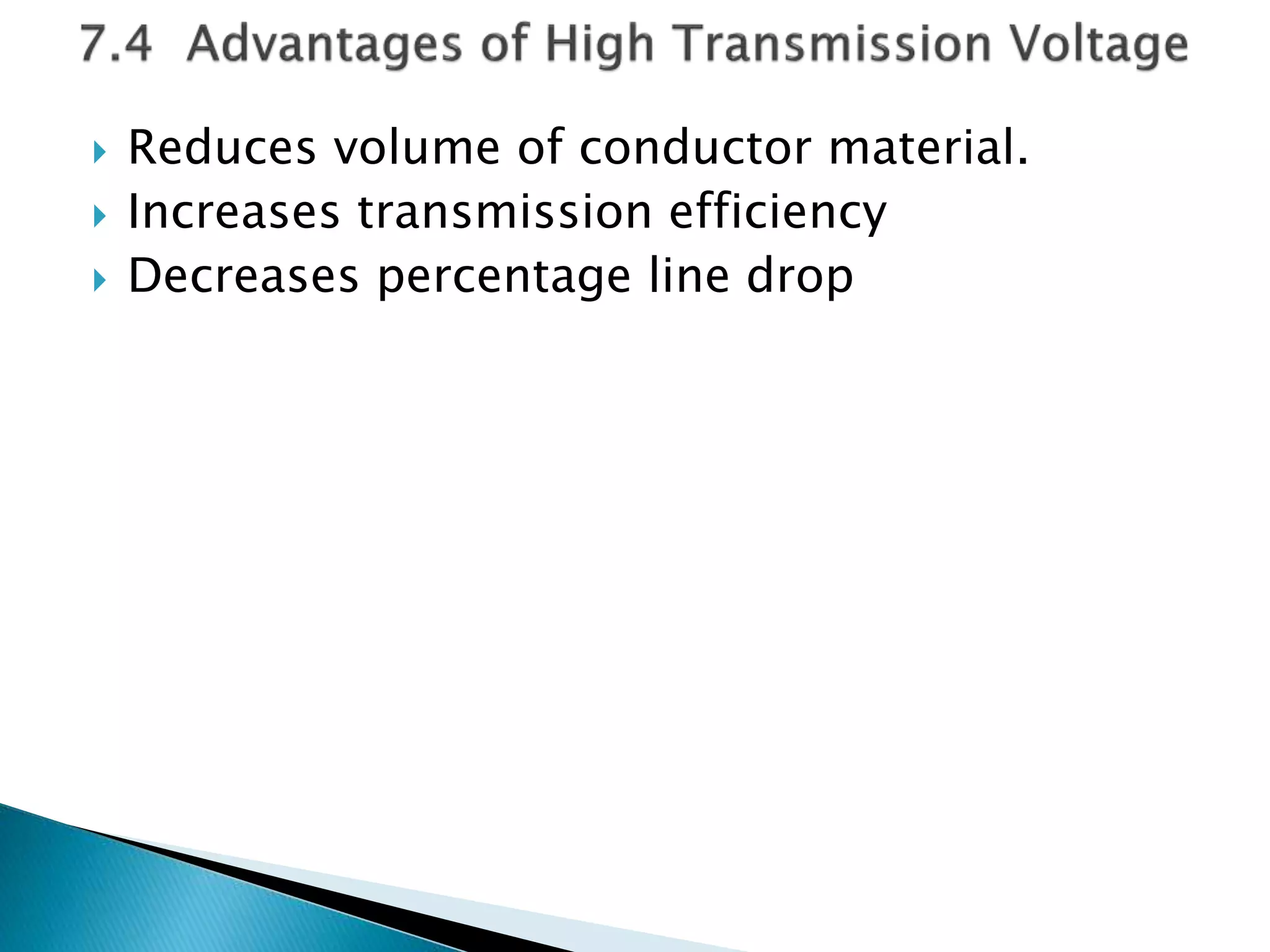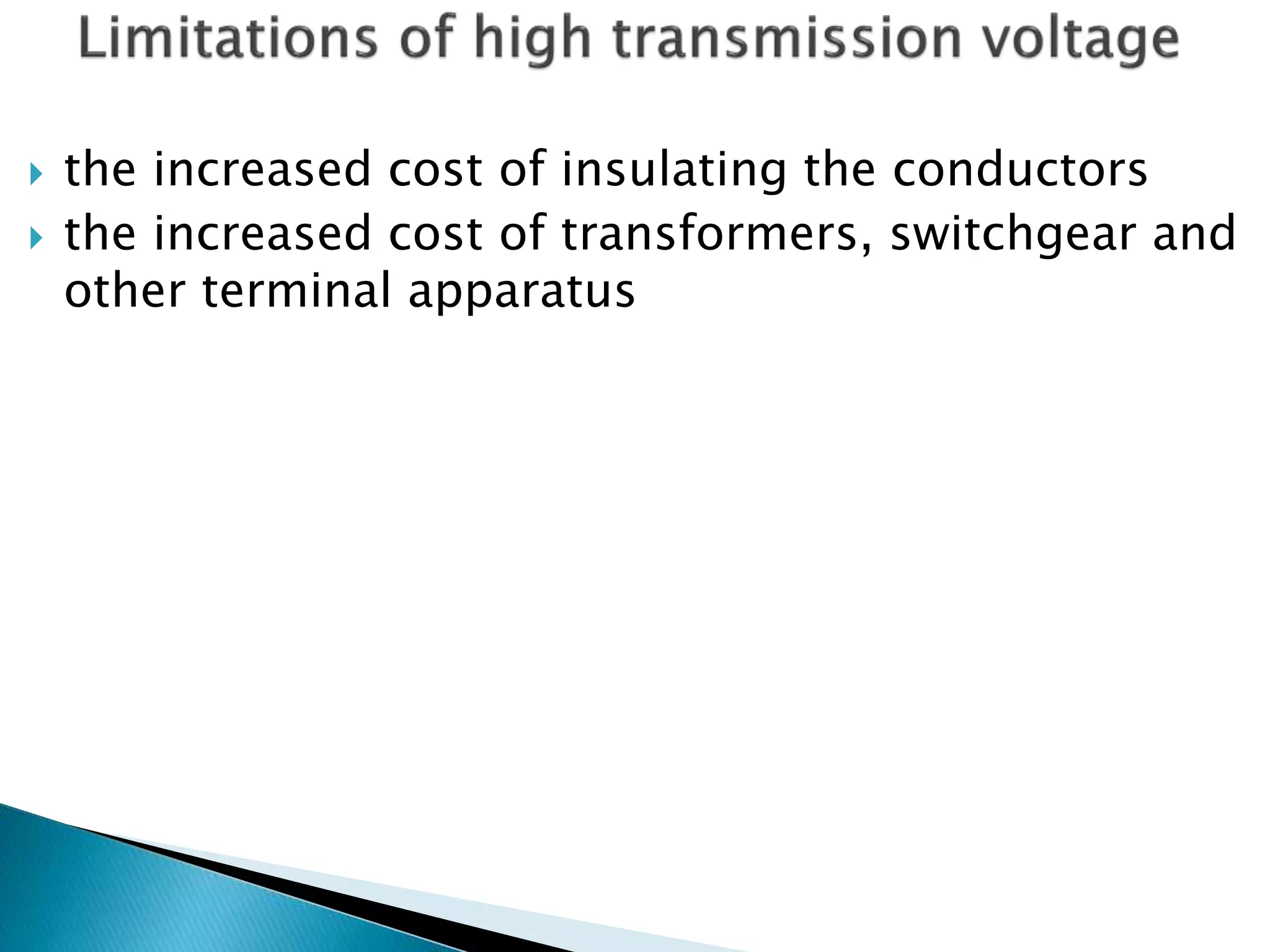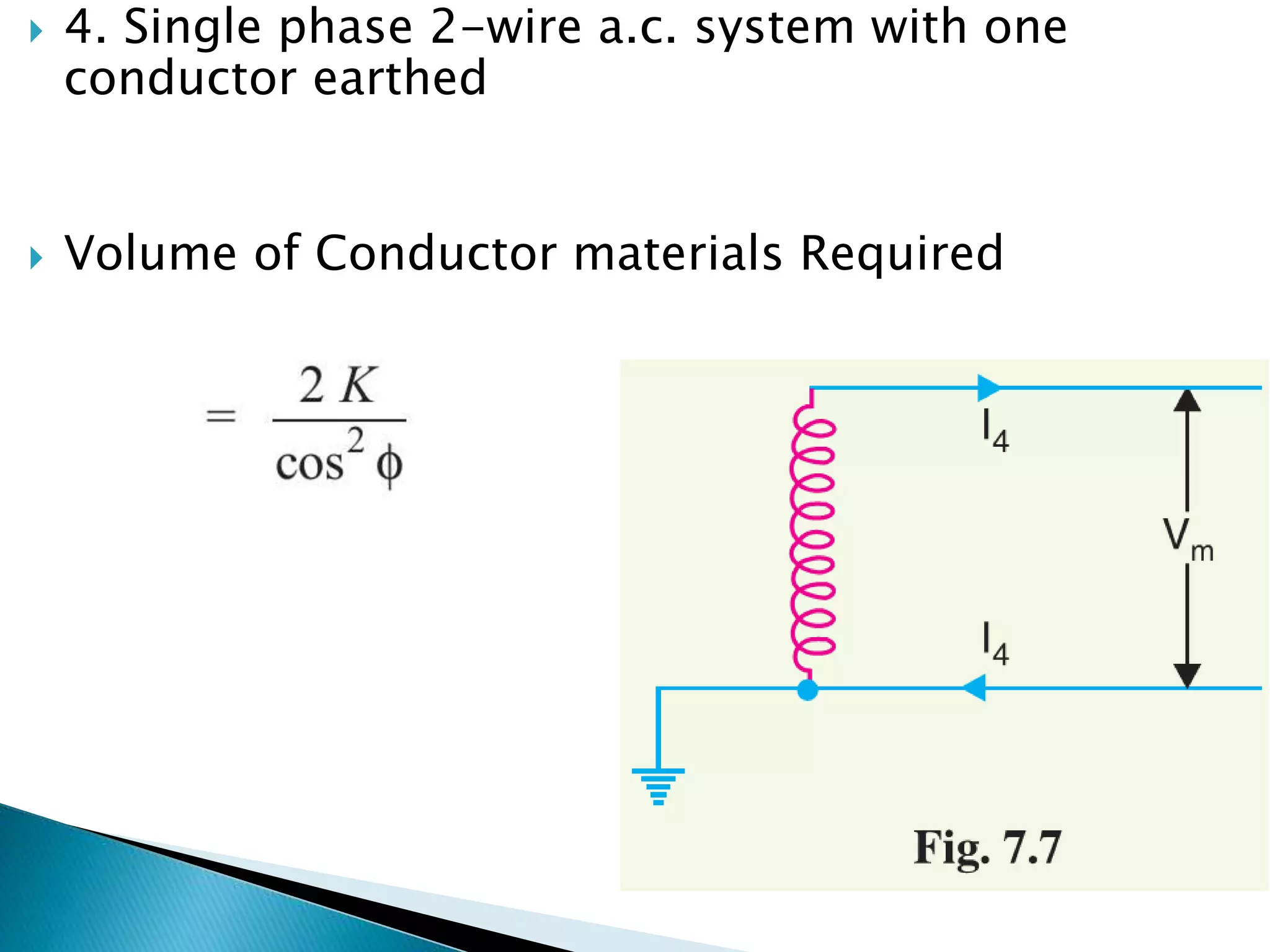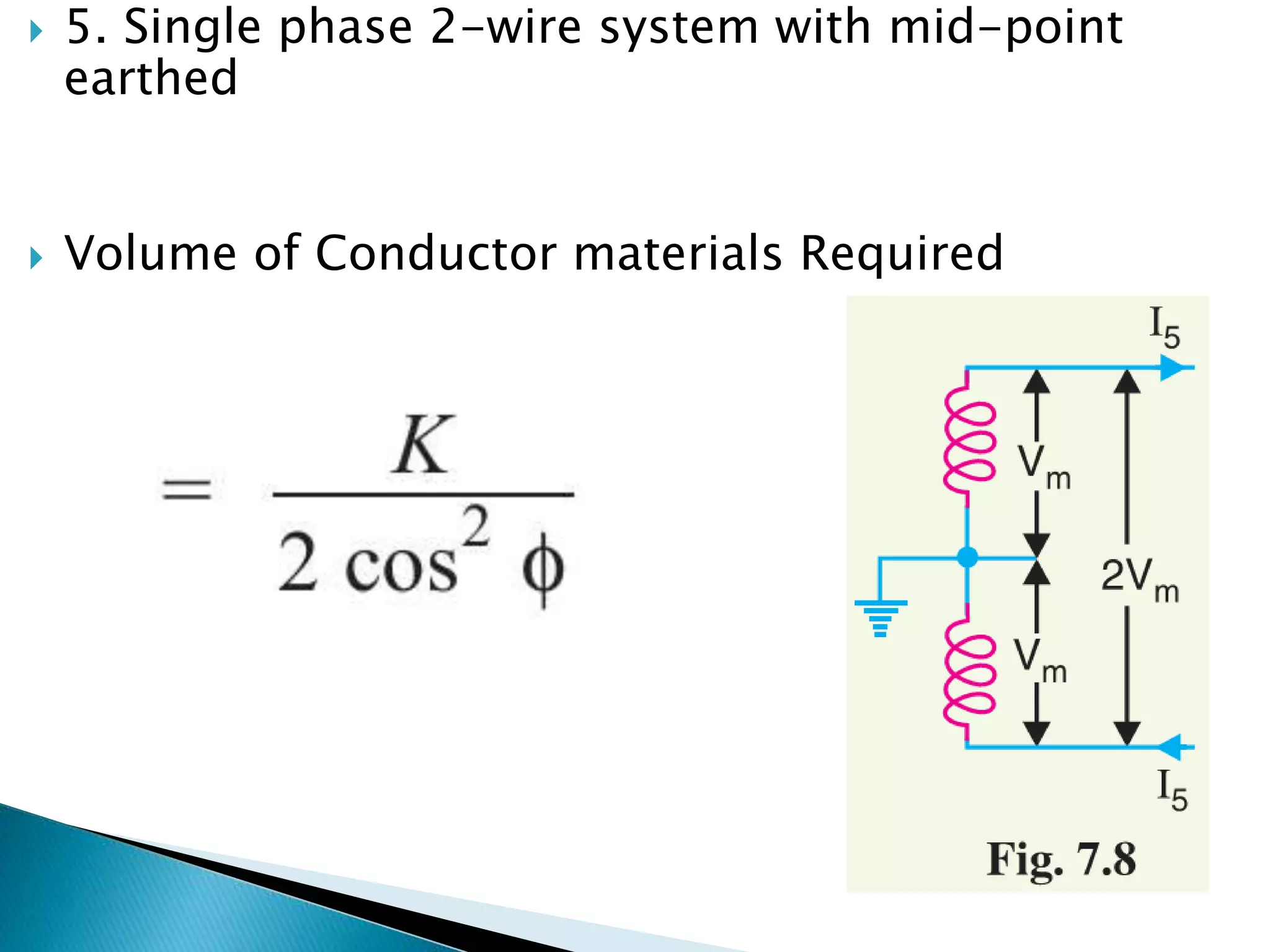The document describes the electric power supply system from generation to distribution. Electric power is generated at power stations and transmitted through high voltage transmission lines over large distances before being distributed to consumers through lower voltage distribution lines. The key components of the system include generation stations, transmission lines, distribution systems, substations to step-up and step-down voltages, and overhead or underground lines.

